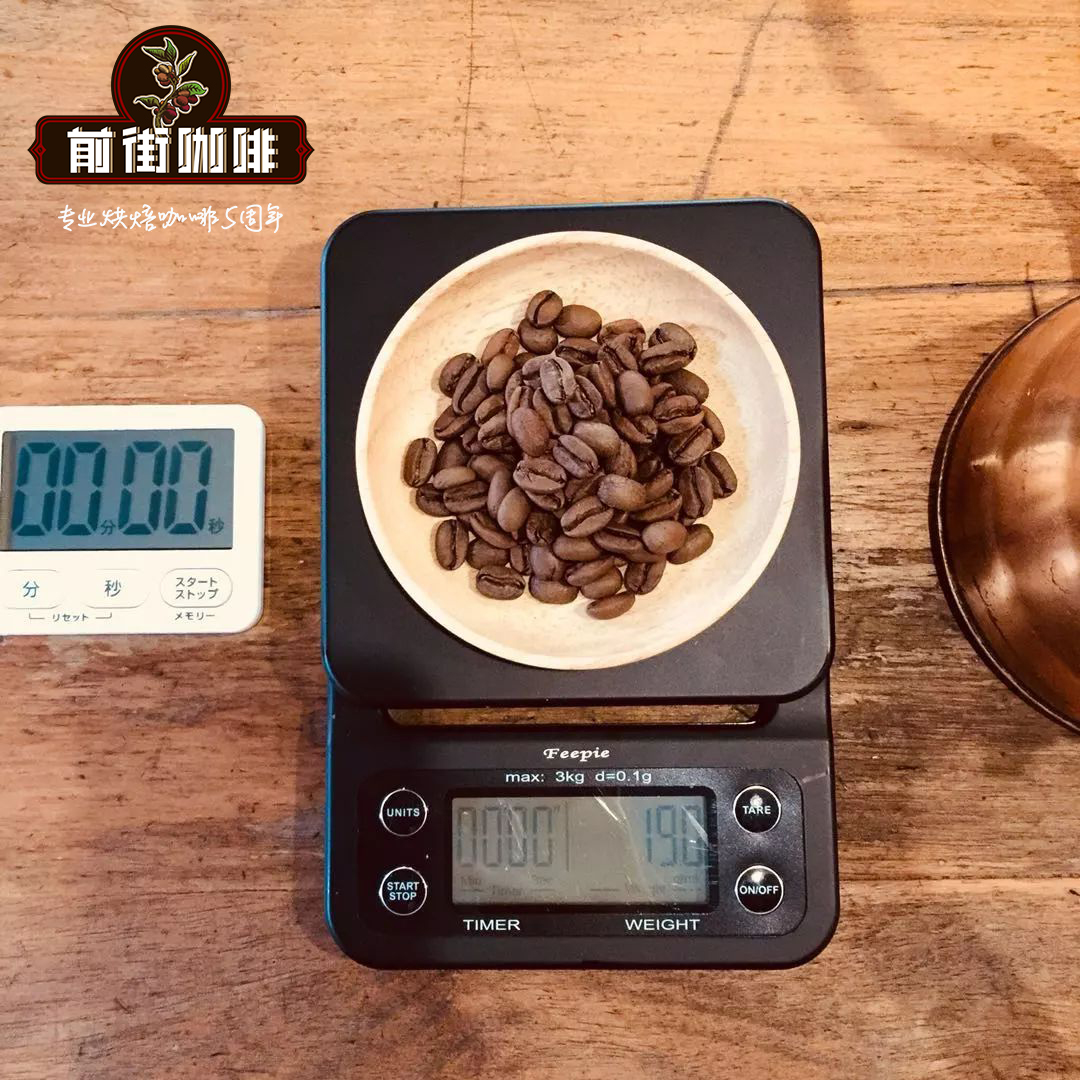How about Brazilian Santos Coffee? Santos Coffee Story the characteristics of Brazilian yellow bourbon coffee beans

Professional coffee knowledge exchange more coffee bean information please follow the coffee workshop (Wechat official account cafe_style)
Brazilian Arabica coffee is called bourbon coffee (Bourbon) because it appeared on the island of Bourbon (now known as Reunion). Santos Coffee is a smaller and curly bean derived from the Yemeni mocha. Using only the top coffee beans harvested in the first two times, it is the highest grade coffee bean in Brazil. We choose the authentic Brazilian yellow bourbon coffee beans-Code 18 of Cerrado Manor, which tastes warm and smooth, slightly sweet and sweet. Brazilian Santos coffee can be tasted alone or mixed with other coffees, such as the charming mamba coffee mixed with Sumatran manning.
Brazilian yellow bourbon coffee
The name "Santos" comes from the port where coffee is shipped, and coffee in the valley around the capital, Sao Paulo, is the most typical coffee in Brazil. Santos is a neutral bean, the best flavor is known as the crown of coffee, if the preparation of other coffee has a unique flavor, the most suitable for people with aristocratic flavor, sense of humor and strong interpersonal relationships. The high-quality Brazilian Bourbon Santos coffee is comparable to Blue Mountain Coffee. If Blue Mountain is the king of coffee, then Brazilian Bourbon Santos Coffee is a hermit in the coffee kingdom. Like all Brazilian coffees, they are best served when they are fresh and tender, because the older they are, the more acidic they are. Although Brazil is known as the "kingdom of coffee", the hometown of coffee is not in Brazil, but in the Ethiopian province of Cafa in Africa. The name "Coffee" evolved from the place name of "Kafa". Coffee was introduced into Brazil after the 18th century. In 1727, Brazil had a border dispute with its northern neighbor French Guiana. In order to prevent the situation from spreading, the Brazilian Governor sent a delegation of military officer Francisco de Moro Barreta to French Guiana for negotiations in an attempt to resolve the dispute between the two countries by peaceful means. Unexpectedly, his border negotiations failed, but unexpectedly became the "father of coffee" of Brazil.
French Guiana introduced coffee in 1722, first planted it in the backyard of the Government House, and then planted it on a small scale on a nearby farm. The Governor regarded coffee as a "national treasure" for fear of being taken away by neighboring countries, especially Brazil, which had absolute military and economic dominance at that time, so there were soldiers with guns patrolling around the coffee garden day and night.
After Moro Barretta arrived in Guyana, the coffee garden was heavily guarded and heavily guarded to keep Moro Barreta and his party from getting half a step closer. However, the handsome young officer won the favor of the governor's wife, not only invited Moro Barretta to taste coffee, but also personally accompanied him to visit the coffee garden, and presented a handful of ripe coffee beans and five coffee seedlings to Moro Barretta. After getting the seeds, Moro Barreta immediately left Guyana to escort the "national treasures" to Brazil. Since then, coffee has settled in Brazil. Those seeds are the ancestors of more than 3.9 billion Brazilian coffee trees today. In the early history of Brazil, coffee started very slowly. When Mr Molobaleta returned to Brazil, coffee culture began in the state of Para, at the mouth of the Amazon. About 1773, coffee was introduced from the north to Brazil's traditional agricultural areas on the southeast coast: Rio de Janeiro and Sao Paulo. As the climate here is very suitable for growing coffee, coupled with fertile land, cheap labor and other factors, coffee production in Brazil has developed rapidly. At the beginning of the 19th century, coffee was grown all over the country, followed by a "coffee boom" that lasted nearly a century.
Brazilian yellow bourbon coffee
END
Important Notice :
前街咖啡 FrontStreet Coffee has moved to new addredd:
FrontStreet Coffee Address: 315,Donghua East Road,GuangZhou
Tel:020 38364473
- Prev

Brazil San Taoxing River sun yellow bourbon coffee beans _ Brazil yellow bourbon coffee how to drink?
Professional coffee knowledge exchange more coffee bean information please follow the coffee workshop (Wechat official account cafe_style) Brazil Sentoxing River / Santeo Manor Elson small Farmer Sun treatment bourbon Coffee BrazilSDM Sitio Sertaozinho Elson Benedito Daniel Natural production area: Carmo de Minas production: Elson small Farmer Variety: yellow bourbon
- Next

Salvadoran coffee AIDA bourbon sun-dried boutique coffee beans recommended _ El Salvador pearl
Professional coffee knowledge exchange more coffee bean information Please follow Coffee Workshop (Wechat official account cafe_style) is the sixth generation of Salvadoran bourbon coffee. Aida founded Aida Battle Selection (ABS) Aida in 2009 to spend her childhood and youth in the United States, but returned to El Salvador at the age of 28. She wasn't a coffee maker at first, but in
Related
- Detailed explanation of Jadeite planting Land in Panamanian Jadeite Manor introduction to the grading system of Jadeite competitive bidding, Red bid, Green bid and Rose Summer
- Story of Coffee planting in Brenka region of Costa Rica Stonehenge Manor anaerobic heavy honey treatment of flavor mouth
- What's on the barrel of Blue Mountain Coffee beans?
- Can American coffee also pull flowers? How to use hot American style to pull out a good-looking pattern?
- Can you make a cold extract with coffee beans? What is the right proportion for cold-extracted coffee formula?
- Indonesian PWN Gold Mandrine Coffee Origin Features Flavor How to Chong? Mandolin coffee is American.
- A brief introduction to the flavor characteristics of Brazilian yellow bourbon coffee beans
- What is the effect of different water quality on the flavor of cold-extracted coffee? What kind of water is best for brewing coffee?
- Why do you think of Rose Summer whenever you mention Panamanian coffee?
- Introduction to the characteristics of authentic blue mountain coffee bean producing areas? What is the CIB Coffee Authority in Jamaica?

